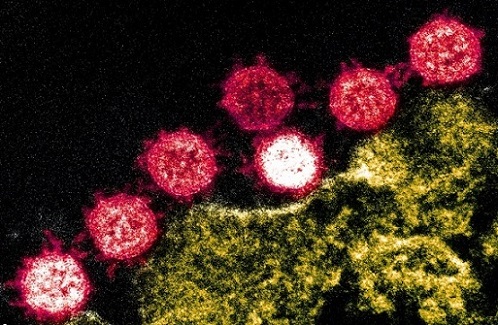Nikhil Prasad Fact checked by:Thailand Medical News Team Jul 07, 2025 5 months, 2 weeks, 3 days, 9 hours, 7 minutes ago
Thailand Medical News: Spanish and Madrid Researchers Reveal New Host Factor Behind SARS-CoV-2 Infection
Scientists from several prominent Spanish institutions have discovered that a protein known as CD9 plays a critical role in helping the SARS-CoV-2 virus—the virus responsible for COVID-19—enter human cells more easily. The team included experts from the Centro Nacional de Biotecnología-CSIC in Madrid, the Health Research Institute of the Principality of Asturias (ISPA) in Oviedo, the Instituto de Salud Carlos III in Madrid, and PharmaMar S.A. in Colmenar Viejo.
 CD9 Protein Found to Boost COVID-19 Virus Entry into Human Cells
CD9 Protein Found to Boost COVID-19 Virus Entry into Human Cells
According to this
Thailand Medical News report, CD9 belongs to a family of proteins called tetraspanins. These proteins are embedded in the cell membrane and help organize special zones called microdomains where key proteins gather. The researchers found that CD9 brings together four essential human proteins involved in SARS-CoV-2 entry into cells—ACE2 (the main receptor for the virus), NRP1, and two enzymes known as TMPRSS2 and furin, which help the virus gain access by cutting its spike protein.
How CD9 Helps the Virus Infect Cells
The study showed that when the CD9 protein is missing—either removed using genetic techniques or blocked with antibodies—the virus has a much harder time infecting cells. In laboratory experiments using lung and colon cells, viral levels dropped up to fivefold when CD9 was not present.
More surprisingly, CD9 seems to influence the presence and location of other important proteins. Cells without CD9 had lower levels of NRP1, which is known to increase SARS-CoV-2 infectivity. The virus struggled to enter these CD9-deficient cells even when ACE2 was still present, showing that CD9 acts like a molecular matchmaker, helping the virus meet all the right partners at once.
CD9 Clusters the Virus Entry Proteins Together
Using advanced lab techniques, the researchers showed that CD9 physically interacts with ACE2 and is located in the same cell membrane zones as ACE2, NRP1, TMPRSS2, and furin. These membrane zones—called detergent-resistant microdomains—act like launching pads where the virus attaches and begins its invasion. Without CD9, these critical proteins were scattered and less available for the virus to use.
The team even used microscopic imaging to confirm that CD9 brings these proteins within touching distance—less than 40 nanometers apart—making viral entry much easier.
Therapeutic Potential of Blocking CD9
One of the most important findings is that using a blocking antibody against CD9 dramatically reduced virus levels in infected cells. This suggests that CD9 could become a new therapeutic target. Drugs that interfere with CD9 might be developed to slow down or stop infection, not only from SARS-CoV-2 but possibly from other similar viruses as well.
The discovery open
s a new path for medical research into how the virus hijacks human cells. It also highlights how our own proteins—when exploited by the virus—can become part of the infection machinery.
The study findings were published on a preprint server and are currently being peer reviewed.
https://www.preprints.org/manuscript/202507.0310/v1
For the latest COVID-19 News, keep on logging to
Thailand Medical News.
Read Also:
https://www.thailandmedical.news/news/aryl-hydrocarbon-receptors-help-rna-viruses-including-sars-cov-2-and-hiv-evade-the-immune-system
https://www.thailandmedical.news/news/various-entry-receptors-for-coronaviruses-including-sars-cov-2-discovered-in-the-oral-cavity-which-exhibits-high-susceptibility-for-infections
https://www.thailandmedical.news/news/scientists-discover-how-sars-cov-2-and-influenza-viruses-hijack-human-cells-by-rewiring-sugar-metabolism
https://www.thailandmedical.news/articles/coronavirus
